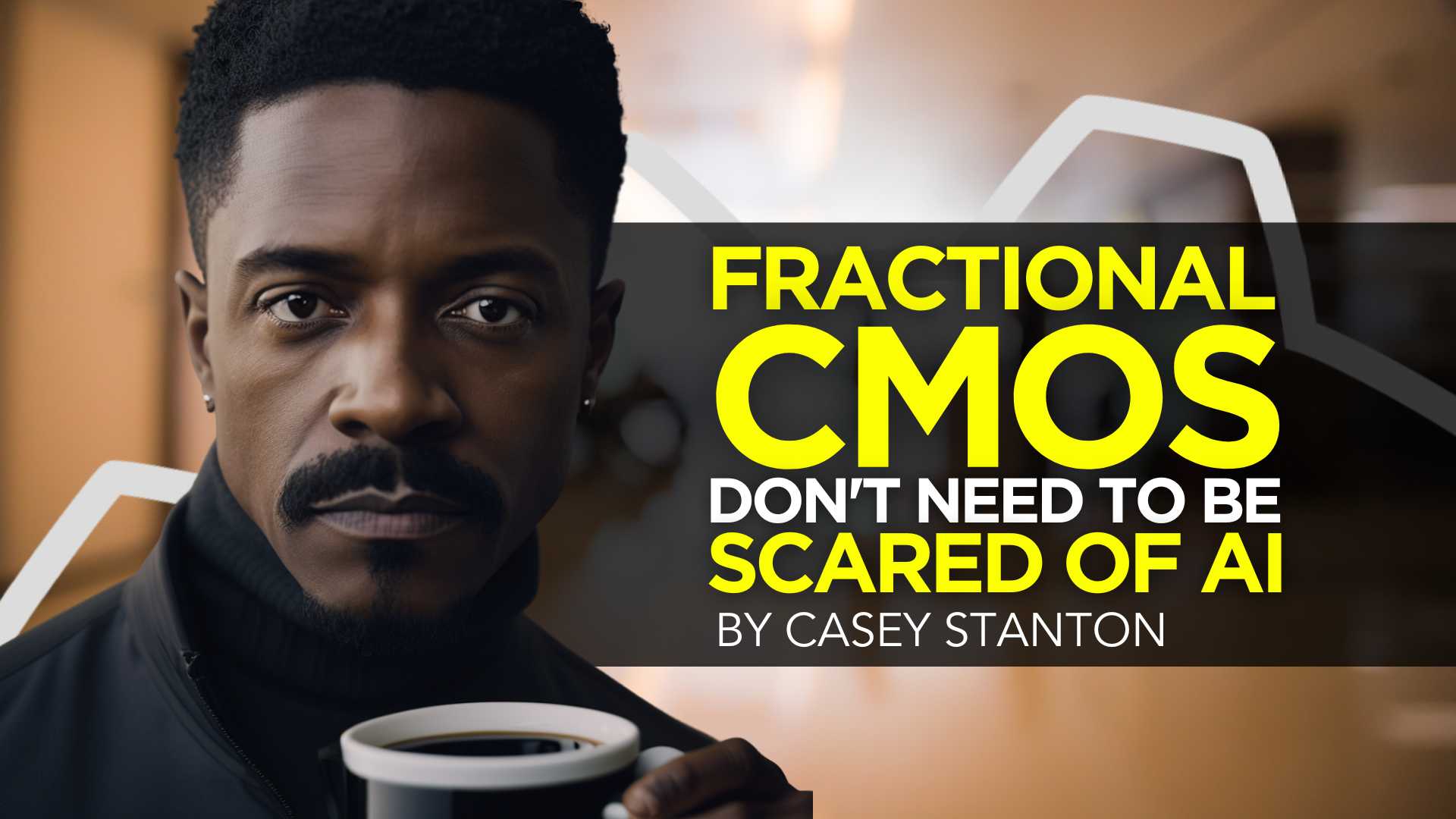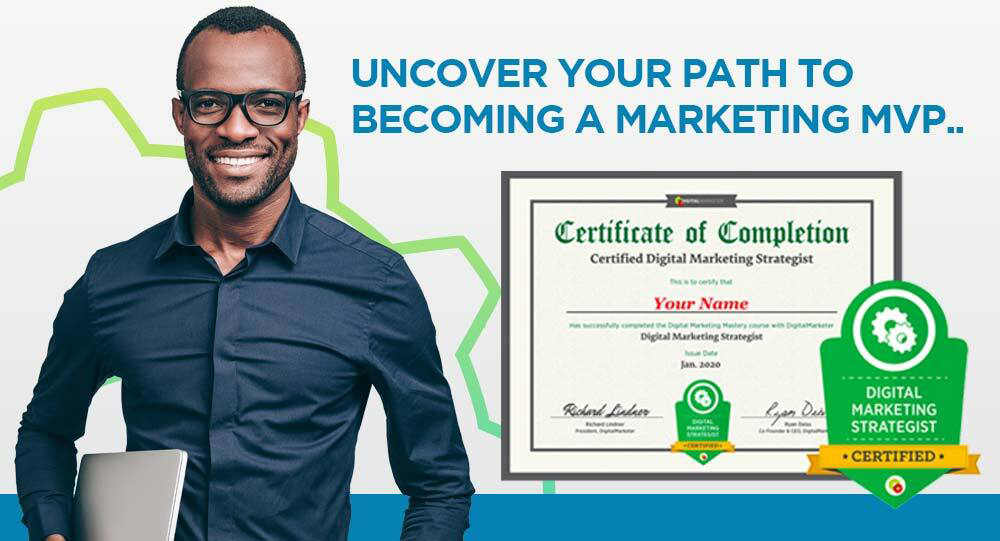MARKETING
Fractional-CMOs Don’t Need to Be Scared of AI

AI will not fundamentally change your role as a Fractional CMO, despite what the masterminds and gurus are selling.
Are You Scared of AI?
This feels like January of 2020, when the pandemic was just starting to get some attention. I remember going to my gym in Fishtown, Philadelphia and talking with the owner about this “weird virus thing.” He didn’t think it was going to be a big deal. I thought there might be a lock-down until July 4. Obviously neither of us were right.
That’s where we are with AI.
There are some people freaking out about how everything is going to change.
And others who are utterly clueless.
I think academia is getting pretty worried about the implications of students writing theses and essays with a few prompts. Similar to the revolution Wikipedia brought about, but this time, much much more dramatic.
In marketing, there are the tacticians who are directly affected:
- Content writers: If you’ve ever used a resource like WriterAccess to get blogs or articles created, you might have paid $0.1 to $0.12 a word for the best-of-the-best writer (I’m talking about ex-Jeopardy contestants!). I have to imagine that those writers are at least having AI write the first draft of their articles, then just making some minor edits and collecting their fee.
- Copywriters: I’m seeing these folks really focus on harnessing AI. The take that I like is that copywriters will leverage AI to pull together creative ideas, cutting down the time to find The Big Idea. Tools like Jasper can help craft headlines, ad copy, email copy, and can absolutely support a copywriter. That said, I think the art of copywriting is safe from the robots, for now. There’s just so much consideration that is required in a good piece of copy that a simple Jasper prompt can’t repeatedly churn out.
- Marketing agencies: Writing boilerplate content for websites? Crafting a more readable About Us page? For the reduction of suffering across all humankind, let’s hope agencies are leveraging AI to help with this necessary evil.
Things are going to change.
But then again, the only constant in life is that everything changes.
If you’ve been in the business game for more than a couple years, you’ve seen other revolutionary advances.
Take, for example, crypto.
We saw all-time highs for bitcoin and ethereum prices in November 2021. If you were plugged into that world, you probably heard of the Decentralized Autonomous Organizations (DAOs) that were doing incredible, innovative work with smart contracts and their tokens.
Then the market saw a significant correction, wiping out over $700B in market capitalization over 6 months.
Some say that crypto is dead, but it’s clear the fundamental technology is here to stay. Development of the ethereum smart contract software Solidity began 7 years ago, and saw dramatic development over the bull run of crypto.
The high-times of token prices attracted some of the best developers in the world to work together on open source projects that moved the technology forward by leaps and bounds. That technology is slowly (and in some cases, rapidly) seeping into our day-to-day lives in the field of banking, regulatory compliance, insurance, supply chain management and more.
What I want you to get out of this comparison is that AI is right now at the “all time high” in the mainstream … and has a lot of room to grow in popularity. ChatGPT is being talked about on small-town country radio stations, in PTA meetings at high schools, at global summits of business leaders (just like bitcoin was). There’s worldwide attention on the technology… and that attention will wane at some point.
The implications of AI will seep into our day-to-day lives. We might notice it in tools like Notion with their release of Notion AI, and we may also not notice when a tool has AI baked into its core. Will anyone say “My car has AI!” in ten years? Or will they just appreciate that their car understands their requests better, and provides a more seamless experience?
The Great Search Engine AI Race is an example of noise related to AI. Yes, the way Google shows rankings may change… I’ve heard SEO folks talk about how Google might no longer show rich snippets and instead answer the query themselves with their AI engine. Maybe Bing with their partnership with OpenAI will somehow climb out of their sub-10% market share position to own, what? 15%? 20% of the market?
Does that matter? I guess. But it’s really not revolutionary for the consumer. We’ll experience a better experience, but then will quickly adapt to it.
AI is about to become ubiquitous; part of our day-to-day lives in a way that (should) make us feel as though it’s not even there. Saying something is “powered by AI” will start to feel like a high school entrepreneurial pitch event where all the students claim their project uses an “algorithm.”
So what’s a Fractional CMO to do about it?
The same thing we did when TikTok came out. Which is the same thing we did when Clubhouse was all the rage on Twitter. We do the same thing we did when Leadpages and then Clickfunnels made building funnels and sales pages easier…
We roll these new tools into our strategy for our clients and execute them at the right time.
That’s it. That’s your job.
Fractional CMOs Solve Bigger Problems. That should be your mantra as you build your Fractional CMO practice. The bigger the problem, the bigger the reward – for your client, for their customers, and for you and your bank account.
What Companies Need from Their CMO in the New Era of AI
Nervous or scattered CEOs might ask you to put all your attention on AI, and for most businesses, that is simply not a good use of your time.
Instead, there’s one word that accurately describes what companies need… and that word is leadership.
The fractional CMO, the interim CMO, and the full-time CMO all have the same basic requirement: To be the leader for their marketing department and to push the team to make the dreams of the CEO and/or the board of directors come true.
AI becomes a tool in your toolbelt. It is also a tool in your client’s competitor’s toolbelt.
A few years ago, I was working as a Fractional CMO for a private equity company and I remember sharing my concerns about the increased CPM on Facebook over a few week stretch. HIs reply was timeless:
“It affects us and our competition the same. Don’t lose sleep over it. Keep fighting.”
What simple, golden advice.
The same is true with AI.
AI content writers mixed with lifelike voice generators, overlaid on a slideshow of images produced by DALL-E seems like a scary and innovative tactic… and it might be. But it’s just a tactic.
And it’s your job to decide if it’s the right tactic or not.
It’s your job to chart the best path, no matter the tools and tactics that emerge.
Oftentimes, the number one thing a business needs is end-to-end tracking of lead source to purchase. Or simply just having a rock-solid offer. Or focusing on one advertising channel to 10x sales of their hero product. Or a salesperson who will call all the webinar attendees who stayed for the whole 60-minute webinar but didn’t purchase.
For most companies, AI is simply another tactic that seems exciting and revolutionary, but in reality, it’s a level-5 tool and the company is stuck at level 1.
Business basics like tracking, generating advertising controls, creating product ascension to maximize customer lifetime value, collecting and sharing testimonials, and delivering a world-class customer experience will last until the end of time. AI is here to stay and yes, it changes everything, but it’s not the panacea to profitability that some marketers want it to be.
Stay focused. Stay in your lane. Bring in more sales. Look for low-hanging fruit that you can use AI on. Test your favorite copywriter’s work against a rewrite by AI and see who wins.
Be open to swinging the AI hammer, but treat it like a tool.
Keep fighting.











